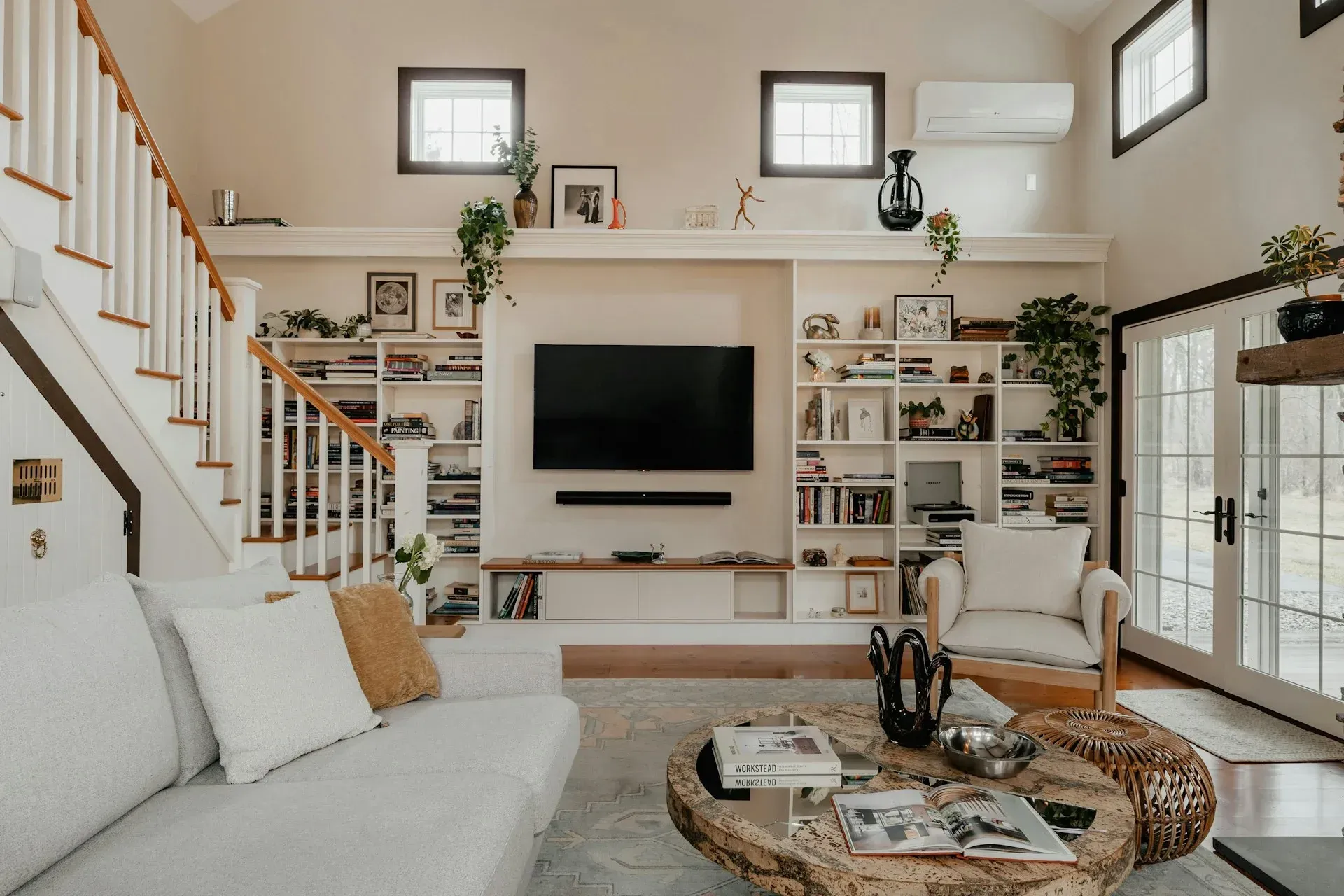Furnished vs. Unfurnished Rentals: Which Is More Profitable for Property Owners?

TL;DR
- Choosing between furnished and unfurnished units for rental investment depends on several factors, including the tenant base, location, maintenance expenses, and management abilities.
- Furnished units generate high income in the short term but are volatile, while unfurnished rentals are stable but generate lower income.
- Furnished units' pros include high income, flexible leasing, and transient renters. Cons include high maintenance costs, turnover, and damage to furnishings.
- Unfurnished units' pros include high tenant retention, low operational costs, and simplified management. Cons include low income and substantial time spent on finding long-term tenants.
- Strategies to maximize profit for either rental type: market research, focus on quality, technology, and professional property management.
Furnished vs Unfurnished Rentals: Which Is More Profitable for Property Owners?
As a landlord, one of the key decisions you’ll face is whether to offer furnished or unfurnished rentals. It’s a common consideration, especially when you’re aiming to balance profitability, tenant appeal, and maintenance effort.
Furnished properties include furniture, appliances, and kitchenware that make them move-in ready, while unfurnished ones provide only the essential fixtures. The right choice depends on your target tenants, location, rental duration, and upkeep costs.
This guide explores furnished vs unfurnished rentals in detail, highlighting the pros, cons, and profitability factors to help you make an informed investment decision.
Furnished vs. Unfurnished Rentals: Comparing Profitability
Though a furnished unit’s price depends on the lease length, furnishing quality, city, etc., such rentals usually cost 15 to 20% more than unfurnished ones. Positioning furnished rentals to cater to vacationers and corporate travelers for short stays can also generate a decent income.
However, keep in mind the cost of furnishing a unit. On average, setting up a one-bedroom apartment can cost between $5,000 and $12,000, which can notably reduce your profit margin.
Unfurnished properties, on the other hand, generally require less maintenance and tend to have lower tenant turnover. So, when comparing the profitability of unfurnished vs furnished rentals, remember:
- Furnished units help you earn more, but are volatile.
- Unfurnished units are more stable but have lower income potential.
Furnished vs. Unfurnished Rentals: Pros and Cons
Here’s a breakdown of furnished vs. unfurnished rental income, maintenance costs, ROI, and more, to help you invest strategically:
Advantages
Disadvantages
Furnished Rentals
- Earn more monthly rent as such units are ready-to-live and promise convenience.
- Attract transient renters, such as students, young professionals, and business travelers.
- Lease them out flexibly on various platforms or to those relocating
- Maintenance costs can be high due to regular cleaning as well as the repair or replacement of worn or damaged furniture or appliances.
- Since tenants stay for 3 to 6 months on average, the vacancy rate is high, and there is a need for frequent property marketing.
- Furnishings are prone to routine wear and tear, and damage.
Unfurnished Rentals
- Retain tenants for longer (
- 12 months or more
- ).
- Keep operational expenses low as there will be fewer replacements and occasions of maintenance.
- Simplify property management owing to fewer tenant transitions and rental unit inspections.
- The rental income is typically lower compared to furnished units.
- Unfurnished rentals aren’t suitable for those seeking short-term housing or corporate travelers.
- In a competitive environment, finding tenants who intend to stay long-term can be time-consuming.
Key Points for Home Owners
If you still find yourself at a crossroads, at Guardian Property Management, we always encourage our owners to consider the following.
Rental Income Potential
Furnished rentals usually stay occupied about 90% of the time, while unfurnished ones average around 95.6%. Even though furnished units can charge higher rent, their profits may be lower after factoring in initial investment costs and vacant periods. In the end, how well you manage each property plays a big role in how much you earn.
Replacement and Maintenance Costs
https://unsplash.com/photos/man-standing-infront-of-miter-saw-WEWTGkPUVT0
Appliances, décor accents, and furniture pieces in furnished units might need replacement every 3 to 4 years. For that, you may need to set aside 15% to 30% of the gross monthly rent.
In case of unfurnished units, though, you can set aside a smaller percentage as there is less need for maintenance, repairs, and replacements.
Tenant Turnover
Turnover tends to be higher for furnished rentals since their tenants (vacationers, students, and corporate professionals)are usually more transient. As mentioned earlier, the average lease term is shorter.
Unfurnished units, on the other hand, experience lower turnover because tenants often seek stability and commit to longer leases of a year or more. They also prefer to personalize the space with their own furniture and décor.
Return on Investment (ROI)
The ROI potential of both furnished and unfurnished units depends on your investment goals and the market conditions. Still, remember the following:
- In a robust market of short-term rentals, furnished units can yield an ROI of 7-9%, especially when there’s high demand for temporary housing.
- Unfurnished rental ROI, on the other hand, can range from 3% to 4% on average.
Ways to Maximize Profit for Both Rental Types
While comparing furnished vs. unfurnished rentals helps make strategic investment decisions, these tips will maximize your profit in either scenario:
Study Market Data to Fix Rent
Use reputable online platforms to study local trends related to rent and occupancy. Consider demand patterns and seasonal variations before pricing your rental unit. For example, prices for furnished units near colleges often peak in late summer due to high student demand.
Focus on Quality Rather Than Quantity
https://unsplash.com/photos/a-brown-leather-chair-sitting-on-top-of-a-wooden-floor-CSMNjqJvRw8
In case of furnished units, opt for furniture that is durable and easy to clean. Make sure appliances are energy-efficient. Avoid highly contemporary décor accents. The objective is to minimize the possibility of frequent replacements.
Avail Professional Property Management Services
A
can take on responsibilities like advertising and tenant screening, lease preparation, move-ins, maintenance scheduling, and accounting. They also understand rental laws and regulations at every level. Partnering with a reliable firm ensures peace of mind, smooth operations, and steady income.
Leverage Technology
Use digital property management tools and software solutions to automate and streamline application screening, rent collection, maintenance jobs, lease renewals, and more. To enhance tenant convenience and satisfaction, consider incorporating features such as security cameras, keyless entry, and thermostats.
Conclusion
When comparing the nuances of ownership with furnished and unfurnished rentals, factor in your tenant base, location, and management capacity before making an investment. It also helps to partner with a reliable
residential property management
company. Furnished units in transient markets are ideal for earning higher short-term income, while unfurnished ones offer more stability, lower maintenance, and steady long-term returns.
With the right guidance from an experienced property management firm, you can navigate the rental market strategically and maximize your profits through expert support, market insights, and modern management tools.
Consult Guardian Property Management for Profitable Rental Investment
Since 2004, Guardian Property Management has been helping homeowners with expert
residential property management in Minnesota
. Our team handles every minuscule detail with precision and efficiency, ensuring full legal compliance while maximizing your returns and keeping your investments stress-free.
via
or
.
Address: 3001 Broadway St NE, Suite 605, Minneapolis, MN 55413
FAQs
Q1. Do you get more rent for a furnished property?
Ans. Although furnished properties generally bring in higher gross rent than unfurnished ones, the net yield can be similar or even lower, as unfurnished units tend to maintain higher occupancy rates.
Q2. Are furnished rentals more affected by market downturns or seasonal demand shifts?
Ans. Yes, furnished units are more affected due to occupancy fluctuations, dependence on short-term tenants, increased exposure to regulatory changes, and less resistance to recession.
Q3. How can property owners transition an unfurnished unit into a furnished one profitably?
Ans. Identify your target market, analyze local rental data, create a realistic furnishings budget, and choose durable furnishings that offer a high return on investment. Keep the décor simple, plan for maintenance, market properties strategically, and ensure compliance with insurance requirements. Additionally, consider consulting a professional property management company.
Share this post















